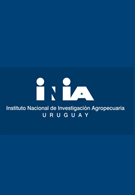ABSTRACT.- Feed intake is a challenging trait to measure due to the high costs associated with labor, feeding, and facilities. Applying machine learning approaches, considering traits as potential predictors, offers a cost-effective alternative to direct feed intake measurement. By leveraging existing animal data, these models can optimize resources and enable feed intake estimation across a larger population without the need for labor-intensive trials. This research aimed to test combinations of
feature selection and prediction models to find the best feed intake (expressed as metabolizable energy intake) prediction approach for a dataset comprising Australian
Merino, Corriedale, and Dohne Merino data. The study dataset with 1,708 observations included 920 Australian Merino, 215 Corriedale, and 337 Dohne Merino sheep from 17 feed intake trials conducted between 2019 and 2022. The dataset was randomly partitioned into two subsets: one for training (80%) the algorithms and the other for direct validation (20%). © 2025 Amarilho-Silveira, De Barbieri, Navajas, Cobuci and Ciappesoni.

